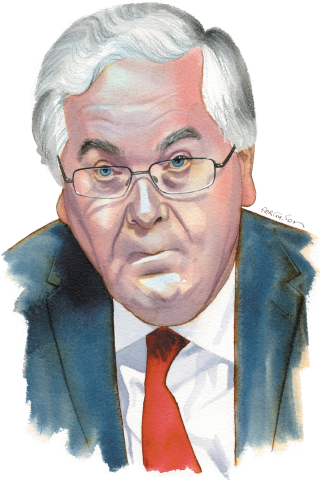
Paul Krugman reviews Mervyn King's The End of Alchemy: Money, Banking, and the Future of the Global Economy, in the NYRB:
These days, of course, the pound sterling is much less widely used than the dollar, the euro, or even the yen or the yuan, and the Bank of England is correspondingly overshadowed in many ways by its much younger counterparts abroad. Yet the bank still punches above its weight in troubled times. In part that’s because London remains a great financial center. But it’s also thanks to the Bank of England’s intellectual adventurousness.
It was a big departure for the Federal Reserve—which has historically been run by bankers rather than academics—when Ben Bernanke, a distinguished monetary economist, was appointed as chairman in 2006. But Mervyn King, a former professor at the London School of Economics, was already running the Bank of England. And it was these two professors who guided the English-speaking world’s biggest economies through the recent financial crisis.
Now King, like Bernanke, has written a book inspired by his experiences. But it’s not at all the book one might have expected. It’s not a play-by-play of the crisis, or a tell-all, or a personal memoir. In fact, King not-so-subtly mocks the authors of such books, which “share the same invisible subtitle: ‘how I saved the world.’”
King’s book is, instead, devoted to “economic ideas.” It is rich in wide-ranging historical detail, with many stories I didn’t know—the desperate shortage of banknotes at the outbreak of World War I, the remarkable emergence of the “Swiss dinar” (old Iraqi notes printed from Swiss plates) in Kurdistan. But it is mainly an extended meditation on monetary theory and the methodology of economics.
And a fascinating meditation it is. As I’ll explain shortly, King takes sides in a long-running dispute between mainstream economic analysis and a more or less radical fringe that rejects the mainstream’s methods—and comes down on the side of the radical fringe. The policy implications of his methodological radicalism aren’t as clear or, I’d argue, as persuasive as one might like, but he definitely challenges policy as well as research orthodoxy.
You don’t have to agree with everything King says—and I don’t—to be impressed by his willingness to let his freak flag fly. His assertion that we haven’t done nearly enough to head off the next financial crisis will, I think, receive wide assent; I don’t know anyone who thinks, for example, that the US financial reforms enacted in 2010 were sufficient. But his assertion that the whole intellectual frame we’ve been using is more or less irreparably flawed is a brave position that should produce a lot of soul-searching among both economists and policy officials.
More here.
